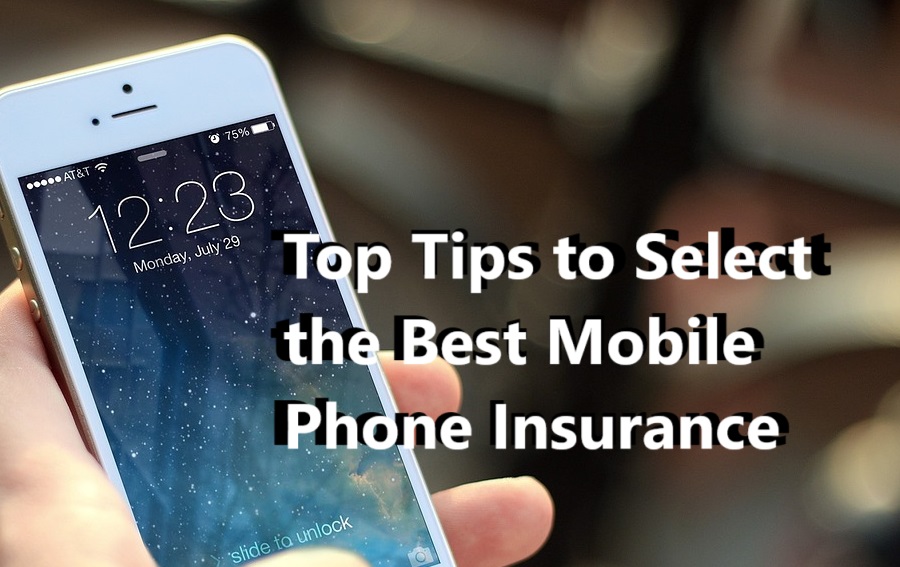In today’s digital age, our smartphones have become an integral part of our lives. They are not just communication devices but also store our precious memories, and sensitive information, and serve as multi-functional tools. Given their importance, protecting our smartphones with mobile phone insurance is a wise decision. In this article, we will provide you with top tips on how to select the best mobile phone insurance, including considerations for Apple iPhone insurance.
Top Tips to Select the Best Mobile Phone Insurance

1. Evaluate Your Needs
Before diving into the world of mobile phone insurance, assess your specific needs. What type of coverage are you looking for? Are you interested in protection against accidental damage, theft, loss, or a combination of these? Understanding your needs will help you narrow down your options.
2. Coverage Options
Different insurance providers offer various coverage options, so it’s essential to review them carefully. Some common coverage options include:
– Accidental Damage: This covers repairs or replacements if your phone is accidentally damaged, such as a cracked screen or water damage.
– Theft: If your phone is stolen, theft coverage ensures you receive compensation for a replacement device.
– Loss: Loss coverage comes into play if you misplace your phone or it gets lost, providing you with a replacement.
– Malfunctions and Breakdowns: Some policies cover mechanical failures and software malfunctions that occur outside of the manufacturer’s warranty.
3. Compare Insurance Providers
Don’t settle for the first mobile insurance provider you come across. Take the time to compare different providers, their plans, and their pricing. Look for reputable insurance companies with a track record of efficient claims processing.
4. Read the Fine Print
Pay close attention to the terms and conditions of the insurance policy. Look for any exclusions or limitations that may affect your coverage. Understanding the fine print is crucial to avoiding surprises when you need to make a claim.
5. Deductibles
Deductibles are the out-of-pocket expenses you must pay when making a claim. Lower deductibles typically mean higher monthly premiums and vice versa. Consider how much you are willing to pay in deductibles when choosing a policy.
6. Claim Process
Investigate the insurance provider’s claim process. A straightforward and efficient claims process can make a significant difference when you need to file a claim. Read reviews and seek feedback from other policyholders about their claim experiences.
7. Coverage Limits
Check if there are any coverage limits or restrictions within the policy. For instance, some insurers may limit the number of claims you can make within a year or have a cap on the maximum claim amount.
8. Additional Features
Some mobile insurance policies come with additional features or benefits. These may include coverage for accessories, like headphones or chargers, or even coverage for your phone’s extended warranty. Assess if these extras align with your needs.
9. Consider Your Phone’s Value
The value of your phone plays a role in determining the type of insurance you need. High-end devices like Apple iPhones may require more comprehensive coverage due to their cost. Consider whether your phone’s value justifies the expense of insurance.
10. Check for Discounts and Bundles
Some insurance providers offer discounts or bundles for covering multiple devices or combining mobile phone insurance with other types of coverage, such as home or auto insurance. These discounts can result in cost savings.
11. Policy Transferability
If you upgrade or replace your phone during the policy term, check if the insurance is transferable to the new device. This can be a valuable feature, as it ensures ongoing coverage without the need for a new policy.
12. Customer Service and Reputation
Research the insurance provider’s customer service reputation. Look for reviews and feedback from existing customers. A provider with excellent customer service can provide a more pleasant experience when you need assistance.
13. Duration of Coverage
Consider the duration of coverage you need. Some policies offer short-term coverage, while others provide long-term protection. Choose a policy that aligns with your plans for the phone.
14. Examine Costs
Calculate the total cost of the insurance over the life of your phone. This includes monthly premiums, deductibles, and any other fees. Ensure that the total cost is reasonable and within your budget.
15. Check for International Coverage
If you frequently travel internationally, look for mobile insurance that offers coverage outside your home country. International coverage can be invaluable if your phone is lost or damaged while abroad.
16. Understand Replacement Options
Find out what replacement options are available if your phone is lost or damaged. Some policies offer new or refurbished devices, while others may provide cash payouts.
17. Consider Your Personal Habits
Reflect on your personal habits and how they may impact your phone’s safety. For example, if you often engage in outdoor activities or have a history of accidentally dropping your phone, comprehensive coverage may be more suitable.
18. Cancellation Policy
Review the insurance provider’s cancellation policy. Ensure you have the flexibility to cancel the policy if your circumstances change or if you decide you no longer need coverage.
19. Read Reviews and Ask for Recommendations
Seek out reviews and recommendations from friends or family who have experience with mobile phone insurance. Real-life experiences can provide valuable insights into the quality of coverage and customer service.
20. Consider Manufacturer Coverage
In addition to third-party insurance providers, consider manufacturer coverage or extended warranty options offered by the phone manufacturer. These warranties may cover defects and malfunctions.
21. Regularly Update Your Policy
As your phone’s value decreases over time, regularly reassess your insurance needs. You may be able to adjust your coverage or switch to a more cost-effective plan.
Conclusion
Selecting the best mobile phone insurance requires careful consideration of your needs, coverage options, deductibles, and costs. By thoroughly researching and comparing insurance providers, reading the fine print, and understanding the policy’s terms and conditions, you can make an informed decision. For those with high-value devices like Apple iPhones, it’s especially important to ensure that your insurance provides adequate protection. Remember that the right mobile insurance policy not only safeguards your device but also provides peace of mind in case of unexpected accidents, theft, or loss.





